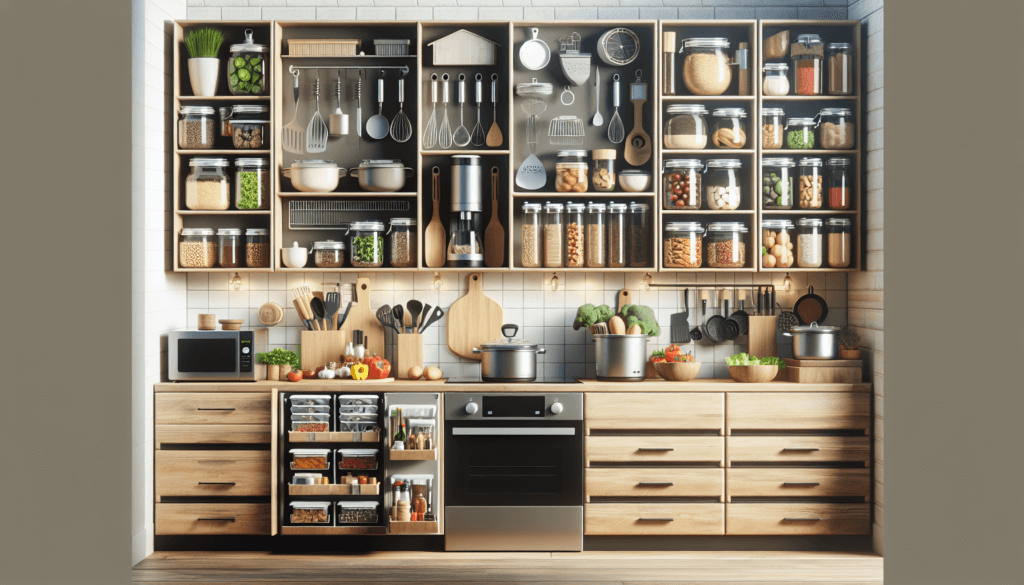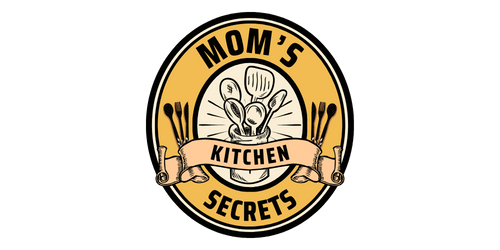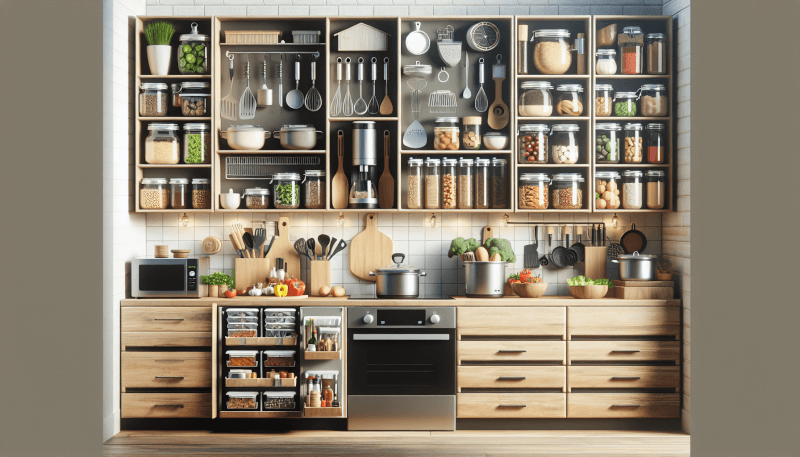In this article, you will discover a collection of 10 essential kitchen hacks that will transform your cooking experience. Whether you’re a seasoned home cook or just starting out, these tips and tricks are guaranteed to save you time, effort, and frustration in the kitchen. From ingenious ways to peel garlic effortlessly to clever methods for preventing food waste, these hacks will elevate your culinary skills and make you the master of your kitchen domain. So grab your apron and get ready to level up your cooking game with these essential kitchen hacks!
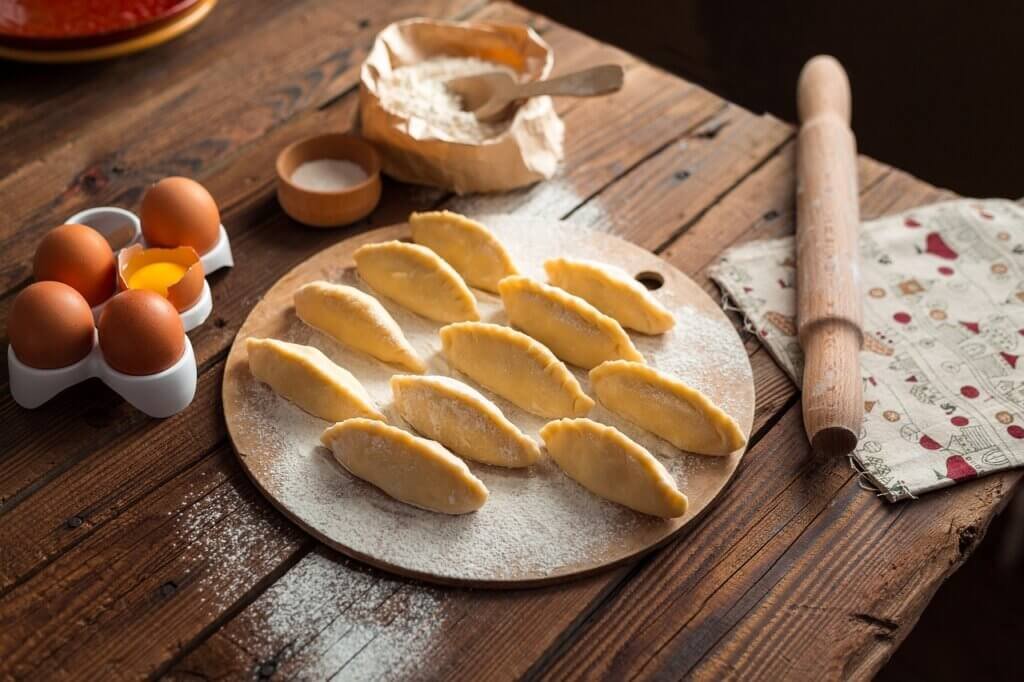
Hacks for Chopping and Cutting
How to easily dice onions
Dicing onions can be a tedious and tear-inducing task, but with a few simple hacks, you can make it a breeze. Start by cutting off the stem and root ends of the onion, then peel off the outer skin. Next, make vertical cuts towards the root end of the onion, but be careful not to cut all the way through. Finally, make horizontal cuts across the onion, and voila! You have perfectly diced onions in no time.
How to chop herbs efficiently
Herbs add a burst of flavor to any dish, but chopping them can be time-consuming. To chop herbs efficiently, gather them into a tight bundle and hold them firmly with one hand. With the other hand, use a sharp knife to make quick, smooth cuts through the herbs. This technique allows you to chop herbs with precision and minimal effort.
How to prevent tears while cutting onions
Onions contain compounds that can irritate your eyes and make you cry while chopping them. To prevent tears, try chilling the onion in the refrigerator before cutting. The cold temperature slows down the release of the tear-inducing compounds. You can also try lighting a candle near your cutting board as the flame burns up some of the irritants released by the onion. Another effective hack is to cut onions under running water to wash away the compounds before they reach your eyes.
How to slice vegetables uniformly
Uniformly sliced vegetables not only look more appealing but also cook more evenly. To slice vegetables uniformly, start by selecting a sharp knife and a stable cutting board. Then, cut off any uneven ends of the vegetable to create a flat surface. Hold the vegetable firmly with one hand and use the other hand to make smooth, consistent slices. Keeping a steady pace and applying even pressure will help you achieve perfectly sliced vegetables every time.
Hacks for Cooking and Baking
How to prevent food from sticking to the pan
One of the most frustrating things in the kitchen is when food sticks to the pan, leaving a mess and ruining the final dish. To prevent food from sticking, make sure your pan is properly preheated before adding any ingredients. You can also try using non-stick cookware or coating the pan with a thin layer of cooking oil or butter. Another trick is to add a small amount of water or broth to the pan while cooking, which creates steam and helps prevent sticking.
How to quickly ripen fruits
Have you ever bought unripe fruits and wished they would ripen faster? There’s a hack for that! To speed up the ripening process, place the fruits in a paper bag along with a ripe banana or apple. The ethylene gas released by the ripe fruit will accelerate the ripening of the other fruits. It’s important to check the bag regularly to ensure the fruits don’t overripen.
How to achieve the perfect hard-boiled egg
Hard-boiled eggs are a versatile ingredient, but getting them just right can be a challenge. To achieve the perfect hard-boiled egg, start by placing the eggs in a single layer in a saucepan. Fill the pan with enough water to cover the eggs by about an inch. Bring the water to a boil, then reduce the heat and let the eggs simmer for about 9-12 minutes. Once cooked, drain the hot water and place the eggs in a bowl of ice water to cool. This will make them easier to peel and give you a perfectly cooked yolk.
How to make homemade buttermilk substitute
Sometimes a recipe calls for buttermilk, but you don’t have any on hand. Don’t worry! You can easily make a homemade buttermilk substitute. Simply add one tablespoon of lemon juice or vinegar to a measuring cup, then add enough milk to reach the one-cup mark. Let it sit for a few minutes to allow the milk to curdle, and you have a homemade buttermilk substitute ready to use in your recipe.
Hacks for Food Storage
How to keep bananas fresh longer
Bananas can quickly become overripe and mushy, but with a simple hack, you can keep them fresh longer. To extend the shelf life of bananas, separate each banana from the bunch and wrap the stem of each banana with plastic wrap. This helps slow down the release of ethylene gas, which causes bananas to ripen quickly. You can also store bananas in the refrigerator to further slow down the ripening process.
How to prevent cheese from drying out
Cheese can dry out and become hard if not stored properly. To prevent this, wrap the cheese tightly in wax paper or plastic wrap, ensuring there are no air pockets. Then, place the wrapped cheese in an airtight container or resealable plastic bag. This will help maintain the moisture and keep the cheese fresh for longer. If your cheese does become dry, you can try adding a slice of apple or a damp paper towel to the container to help restore some moisture.
How to best store fresh herbs
Fresh herbs can wilt and lose their flavor if not stored correctly. To keep herbs fresh, trim the ends of the stems and place them in a glass or jar with about an inch of water. Loosely cover the herbs with a plastic bag and store them in the refrigerator. Alternatively, you can also store herbs by wrapping them in a damp paper towel and placing them in a resealable bag. These methods will help prolong the life of your herbs and keep them vibrant and flavorful.
How to revive stale bread
Stale bread doesn’t have to go to waste. There are several hacks to revive it and make it as good as fresh. One method is to sprinkle the bread with a little water and place it in a preheated oven at 350°F for a few minutes. The heat and moisture will help soften the bread and restore some of its freshness. Another option is to wrap the bread in a damp paper towel and microwave it for 10-20 seconds. This will help rehydrate the bread and make it soft and delicious again.
Hacks for Kitchen Cleaning
How to easily clean a greasy stovetop
A greasy stovetop can be a challenge to clean, but with the right hacks, you can make it a breeze. Start by removing any loose debris or food particles. Then, sprinkle baking soda over the greasy areas and let it sit for a few minutes to absorb the grease. Next, gently scrub the stovetop with a sponge or cloth soaked in warm soapy water. For stubborn grease stains, you can make a paste with baking soda and water and apply it directly to the stain. After scrubbing, rinse the stovetop with clean water and dry it with a towel.
How to clean a blender effectively
Cleaning a blender can be a hassle, especially when food gets stuck in the nooks and crannies. To clean your blender effectively, fill it halfway with warm water and a few drops of dish soap. Then, secure the lid tightly and turn on the blender for a few seconds. The swirling water will help dislodge any food residue. After blending, remove the soapy water and rinse the blender thoroughly with clean water. If there are stubborn stains, you can scrub them with a brush or sponge before rinsing.
How to remove stubborn stains from cutting boards
Cutting boards can develop stubborn stains over time, but there’s an easy hack to remove them. Start by sprinkling a generous amount of coarse salt over the stained area. Then, use half of a lemon or a sponge soaked in lemon juice to scrub the salt into the stain. The acidity of the lemon and the abrasiveness of the salt will help lift the stain. Once the stain is gone, rinse the cutting board with water and dry it thoroughly.
How to keep your dishwasher running smoothly
A well-maintained dishwasher can save you time and energy. To keep your dishwasher running smoothly, start by regularly cleaning the filter and removing any food particles or debris. You can also run a cycle with a dishwasher cleaner to remove any built-up residue. It’s important to scrape off excess food from dishes before loading them into the dishwasher to prevent clogging and ensure a thorough clean. Additionally, periodically check the sprayer arms for any blockages and clean them if necessary. With proper care and maintenance, your dishwasher will continue to efficiently clean your dishes.
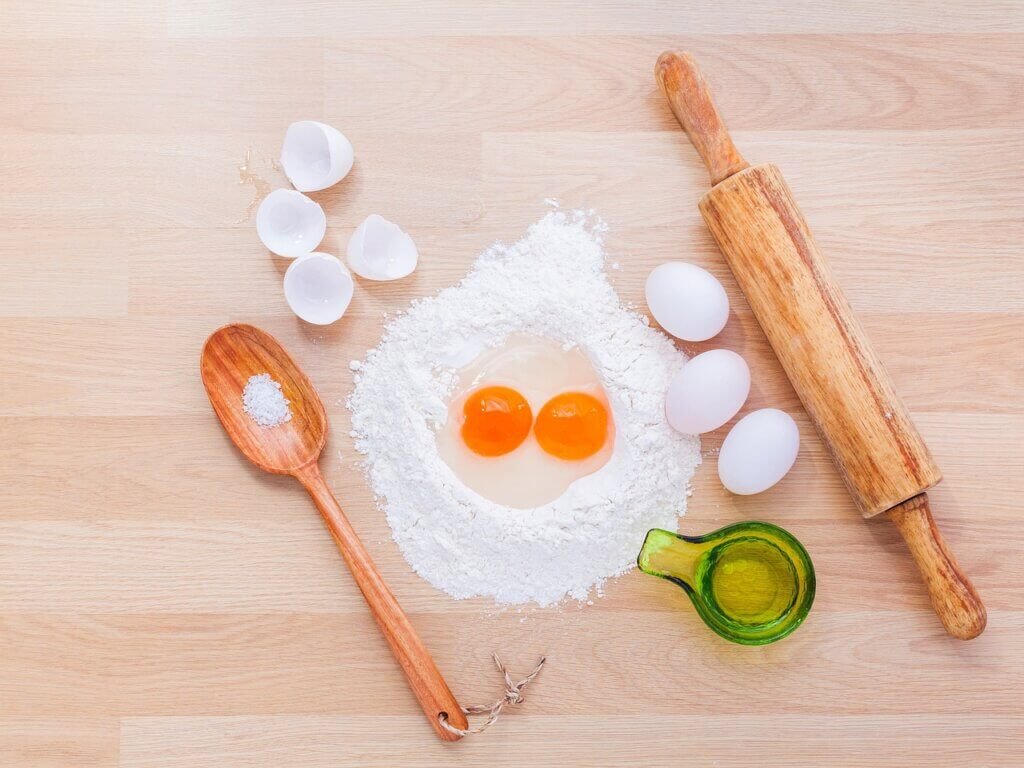
Hacks for Meal Planning
How to efficiently meal prep for the week
Meal prepping can help save time and make weeknight dinners a breeze. To efficiently meal prep for the week, start by planning your meals and creating a grocery list. Choose recipes that have overlapping ingredients to minimize waste. Set aside a dedicated time each week to chop vegetables, marinate proteins, and pre-cook staple ingredients. Divide the prepped ingredients into individual portions and store them in airtight containers in the refrigerator. This way, you can easily assemble and cook meals throughout the week with minimal effort.
How to create a well-stocked pantry
Having a well-stocked pantry is the key to quick and convenient cooking. Start by making a list of pantry essentials such as grains, legumes, oils, spices, and canned goods. Stock up on versatile ingredients that can be used in a variety of recipes. It’s also helpful to organize your pantry by grouping similar items together and labeling them for easy access. Regularly take inventory of your pantry and replenish items as needed. With a well-stocked pantry, you’ll always have the ingredients you need for delicious meals.
How to repurpose leftovers
Leftovers don’t have to be boring! With a little creativity, you can transform them into new and exciting dishes. For example, roasted vegetables can be turned into a frittata or added to a salad. Leftover chicken or beef can be used in tacos, stir-fries, or casseroles. Don’t shy away from experimenting with flavors and textures to create unique meals. By repurposing leftovers, you not only reduce food waste but also save time and effort in the kitchen.
How to make grocery shopping easier
Grocery shopping can be overwhelming, but with a few hacks, you can make the process easier and more efficient. Start by making a grocery list based on your meal plan and pantry inventory. Organize the list by aisle or sections of the store to minimize backtracking. Consider using grocery shopping apps or online delivery services to save time and avoid impulse purchases. It’s also helpful to shop during off-peak hours when the store is less crowded. By employing these hacks, you can streamline your grocery shopping experience and make it a stress-free task.
Hacks for Flavour Enhancement
How to revive wilted herbs
Wilted herbs can still be used to add flavor to dishes. To revive them, fill a bowl with ice water and submerge the herbs for a few minutes. This will help hydrate and refresh the leaves, making them crisp and vibrant again. After soaking, gently pat the herbs dry with a paper towel before using them in your recipes. By reviving wilted herbs, you can ensure the full flavor and fragrance they bring to your dishes.
How to infuse oil with herbs and spices
Infused oils can add a depth of flavor to your cooking. To infuse oil with herbs and spices, start by selecting high-quality oil such as olive oil or vegetable oil. Heat the oil gently in a saucepan until it reaches a warm but not boiling temperature. Add your desired herbs and spices to the oil and let it steep for 30 minutes to 2 hours, depending on the intensity of flavor desired. Once infused, strain the oil to remove the herbs and spices, and transfer it to a clean, airtight container. Infused oils can be used in salad dressings, marinades, or drizzled over dishes for an extra burst of flavor.
How to make homemade seasoned salts
Seasoned salts are a versatile ingredient that can enhance the flavor of any dish. To make homemade seasoned salts, start with a base of kosher salt or sea salt. Mix in a combination of your favorite dried herbs, spices, and other seasonings such as garlic powder, onion powder, paprika, or dried lemon zest. Experiment with different flavor combinations to create your own signature seasoned salt blends. Store the seasoned salts in airtight containers and use them as a seasoning for meats, vegetables, or even popcorn.
How to enhance the flavor of store-bought soups
Store-bought soups can sometimes lack depth of flavor, but there are simple hacks to enhance their taste. Start by sautéing aromatics such as onions, garlic, or herbs in a little oil or butter before adding the soup. This will add a layer of flavor and aroma to the soup. You can also incorporate additional ingredients like cooked vegetables, cooked grains, or protein such as cooked chicken or beans to make the soup heartier. For a final flavor boost, season the soup with herbs, spices, or a splash of acid like lemon juice or vinegar. These hacks will elevate the flavor of store-bought soups and make them taste homemade.
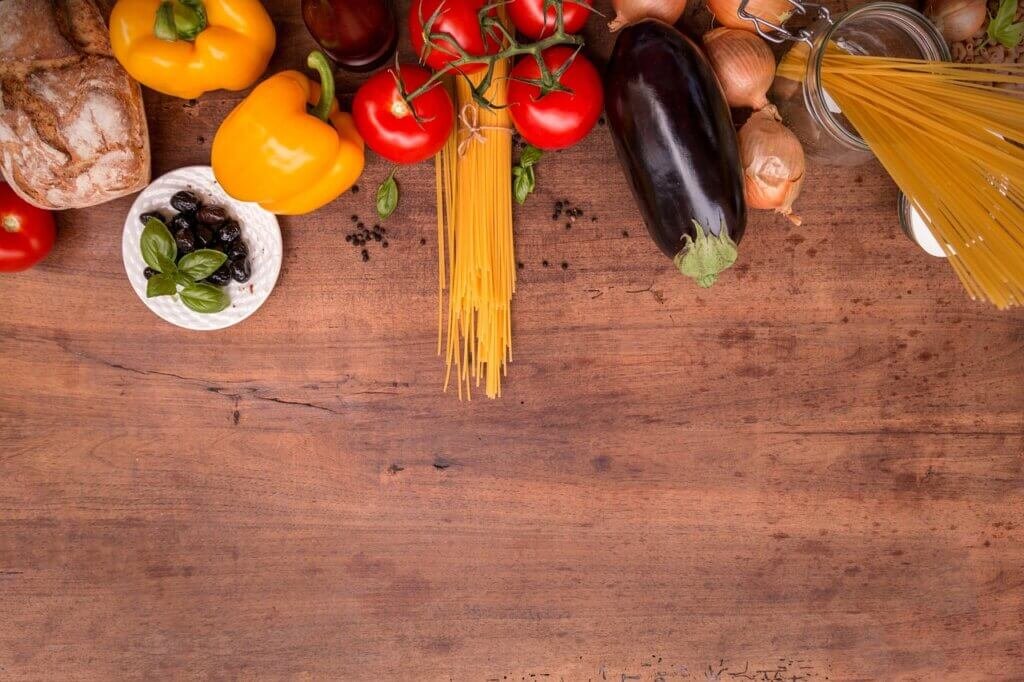
Hacks for Time and Energy Saving
How to quickly soften butter
Forgot to take the butter out of the refrigerator and need it softened quickly? There’s a hack for that! Start by cutting the butter into small cubes and place them on a microwave-safe plate. Microwave the butter on low power for 5 seconds intervals, flipping the cubes after each interval. This will help soften the butter without melting it. Alternatively, you can grate cold butter using a cheese grater, which will quickly bring it to room temperature. These hacks will save you time and frustration when you need softened butter in a pinch.
How to easily peel garlic cloves
Peeling garlic cloves can be a tedious and time-consuming task. To make it easier, try this hack. Place the garlic cloves on a cutting board and gently press them with the side of a knife or the palm of your hand. This will help loosen the skin and make it easier to peel. You can then use your fingers to remove the skin from each clove. Alternatively, you can place the garlic cloves in a small bowl, cover it with another bowl of the same size, and shake vigorously. The friction will help remove the skins, and you’ll have peeled garlic cloves in no time.
How to remove eggshells effortlessly
Removing eggshells can be a frustrating experience, but with a simple hack, you can make it effortless. Start by cracking the egg on a hard surface, such as a countertop or cutting board, rather than the rim of a bowl. This creates small cracks in the shell and makes it easier to peel. Then, gently roll the cracked egg back and forth under your palm to loosen the shell. Finally, peel off the shell, starting at the wider end of the egg where the air pocket is located. By following these steps, you can remove eggshells effortlessly and avoid any unnecessary mess.
How to speed up the defrosting process
Forgetting to thaw ingredients can delay meal preparation, but there are hacks to speed up the defrosting process. One method is to use cold water. Fill a large bowl or sink with cold water and submerge the sealed package of frozen food. This allows for faster heat transfer and can help thaw the food in less time than simply leaving it out at room temperature. It’s important to change the water every 30 minutes to maintain a cold temperature. Another hack is to use a microwave’s defrost function, which allows for precise and quick thawing. However, it’s crucial to monitor the food closely to prevent it from cooking partially during the defrosting process.
Hacks for Recipe Substitutions
How to replace eggs in baking
Whether you’re vegan or have an egg allergy, there are several effective substitutes for eggs in baking. One common substitution is using applesauce or mashed bananas, which adds moisture and acts as a binding agent. For each egg, replace it with 1/4 cup of applesauce or mashed bananas. Another option is using a flaxseed or chia seed mixture. Mix one tablespoon of ground flaxseed or chia seeds with three tablespoons of water and let it sit for a few minutes until it thickens. This mixture can replace one egg in baking recipes. Unsweetened yogurt, silken tofu, or buttermilk can also be used as egg substitutes depending on the recipe.
How to substitute ingredients for gluten-free recipes
When baking gluten-free, it’s important to find substitutes that mimic the structure and texture of gluten. One common substitute is using a gluten-free flour blend, which combines different flours and starches to create a similar texture to all-purpose flour. Xanthan gum or guar gum can also be added to mimic the binding properties of gluten. For every cup of gluten-free flour, add 1/2 to 1 teaspoon of xanthan gum or guar gum. Using almond flour, coconut flour, or oat flour can also provide a gluten-free alternative in specific recipes. It’s important to refer to specific gluten-free recipes for the best results.
How to make vegan buttermilk substitute
Vegan buttermilk can be easily made by combining plant-based milk with an acid like lemon juice or vinegar. Simply add one tablespoon of lemon juice or vinegar to a measuring cup, then add enough plant-based milk to reach the one-cup mark. Let it sit for a few minutes to allow the milk to curdle, and you have a vegan buttermilk substitute ready to use in your recipes. This substitution works well in baking, providing the same tangy flavor and moisture as traditional buttermilk.
How to replace common allergens in recipes
For those with food allergies, it’s essential to find suitable substitutes for common allergens. When substituting dairy, options include plant-based milk, such as almond milk or soy milk, or non-dairy yogurt or cheese alternatives. For egg allergies, alternatives like applesauce, mashed bananas, flaxseed or chia seed mixture, or commercially available egg replacers can be used in recipes. To replace wheat flour for those with gluten allergies, gluten-free flour blends or specific gluten-free flours like almond flour, coconut flour, or oat flour can be used. It’s important to read labels carefully and consider individual dietary restrictions and preferences when making substitutions.

Hacks for Emergency Situations
How to put out a kitchen grease fire
A kitchen grease fire can quickly escalate, but acting promptly and knowing the right hack can help extinguish it. First and foremost, never use water to put out a grease fire as it can cause the flames to spread. Instead, smother the fire by covering the pan with a metal lid or a baking sheet. Alternatively, you can pour baking soda or salt onto the flames to help extinguish them. If the fire is too large to control, evacuate the area immediately, call emergency services, and use a fire extinguisher if you have been trained to do so. It’s important to prioritize safety and take necessary precautions to prevent injuries or further damage.
How to quickly stop a blender spillage
A blender spillage can create a mess in an instant, but there’s a simple hack to stop it quickly. In case of a spillage, immediately turn off the blender and unplug it to prevent any further accidents. Carefully lift the blender jar off the base and place it on a stable surface. Use a clean cloth or paper towels to wipe away any spills, taking caution not to get too close to the blender blades. Clean up any liquid that may have leaked onto the base or surrounding areas. Remember to always exercise caution when using a blender to minimize the risk of spillage.
How to salvage overcooked dishes
Overcooking a dish can be disheartening, but there are hacks to salvage it and make it enjoyable. If the dish is dry, try adding a little liquid, such as broth, sauce, or water, to rehydrate it. Be cautious not to add too much liquid at once, as it may dilute the flavors. If the dish is over-seasoned, consider balancing the flavors by adding a mild ingredient, such as cooked rice, cooked pasta, or plain yogurt, to absorb some of the excess seasoning. Alternatively, you can create a sauce or gravy to accompany the dish and add moisture and flavor. By employing these hacks, you can salvage overcooked dishes and turn them into a delicious meal.
How to remove broken glass from the floor safely
Discovering broken glass on the floor can be dangerous, but with the right hack, you can remove it safely. Start by wearing thick gloves and closed-toe shoes to protect yourself from any sharp shards. Carefully sweep large pieces of glass into a dustpan, taking care not to push the glass around and create more hazards. For smaller shards or hard-to-reach areas, use a piece of bread or a damp paper towel to pick up the glass. The soft texture of the bread or paper towel will help trap the shards. Dispose of the broken glass in a sealed bag or container to prevent accidents. Finally, thoroughly clean the area with a damp cloth to ensure no small fragments remain.
Hacks for Kitchen Organization
How to maximize storage in a small kitchen
Storage space is often limited in a small kitchen, but with a few hacks, you can maximize the available space. Start by using vertical storage options such as wall-mounted shelves, hooks, or magnetic strips to free up valuable counter space. Utilize the insides of cabinet doors by attaching small hooks or racks to hang items like measuring spoons or pot lids. Stackable containers, collapsible storage bins, or modular shelving can help optimize pantry and cabinet space. Don’t forget to declutter regularly and donate or discard items you no longer need. It’s important to make the most of every inch of storage in a small kitchen.
How to organize your refrigerator effectively
An organized refrigerator can save you time and prevent wasted food. First, start by cleaning out your refrigerator and discarding any expired or spoiled items. Categorize the remaining items by type, such as meats, dairy, or produce, and designate specific areas or drawers for each category. Use clear bins or containers to group similar items together and make them easily accessible. Labeling shelves or drawers can also help family members find what they need quickly. It’s essential to practice the “first in, first out” principle by placing newer items behind older ones to avoid food waste. With an organized refrigerator, you can easily locate ingredients and minimize food spoilage.
How to declutter and streamline your pantry
A cluttered pantry can make meal preparation frustrating and lead to unnecessary food waste. Start by decluttering your pantry and removing any expired or unused items. Group similar items together, such as grains, baking supplies, or canned goods. Utilize storage containers or clear bins to keep smaller items organized and visible. Label shelves or containers to make finding items easier. Consider installing door-mounted shelves or a spice rack to free up shelf space. Regularly take inventory of your pantry to ensure you’re using up older items and restocking as needed. By streamlining your pantry, you’ll save time and effort in the kitchen.
How to create an efficient kitchen workflow
An efficient kitchen workflow can make cooking and meal preparation more enjoyable and less stressful. Start by keeping commonly used items, such as utensils, cutting boards, and spices, within easy reach. Arrange your workspace to have designated zones for prepping, cooking, and serving. Keep a trash can or compost bin nearby for easy disposal of scraps. Plan your cooking process in advance, considering the order in which dishes need to be cooked, so you can use your time and resources efficiently. Clean as you go to minimize clutter and maintain a tidy workspace. By creating an efficient workflow, you’ll be able to navigate your kitchen with ease and complete tasks more efficiently.
In conclusion, these essential kitchen hacks cover a wide range of topics, from chopping and cutting to cleaning and organization. With these tips and tricks up your sleeve, you’ll be able to tackle any kitchen challenge with ease and confidence. Remember to always prioritize safety, experiment with flavors, and have fun in the kitchen. Happy cooking!
